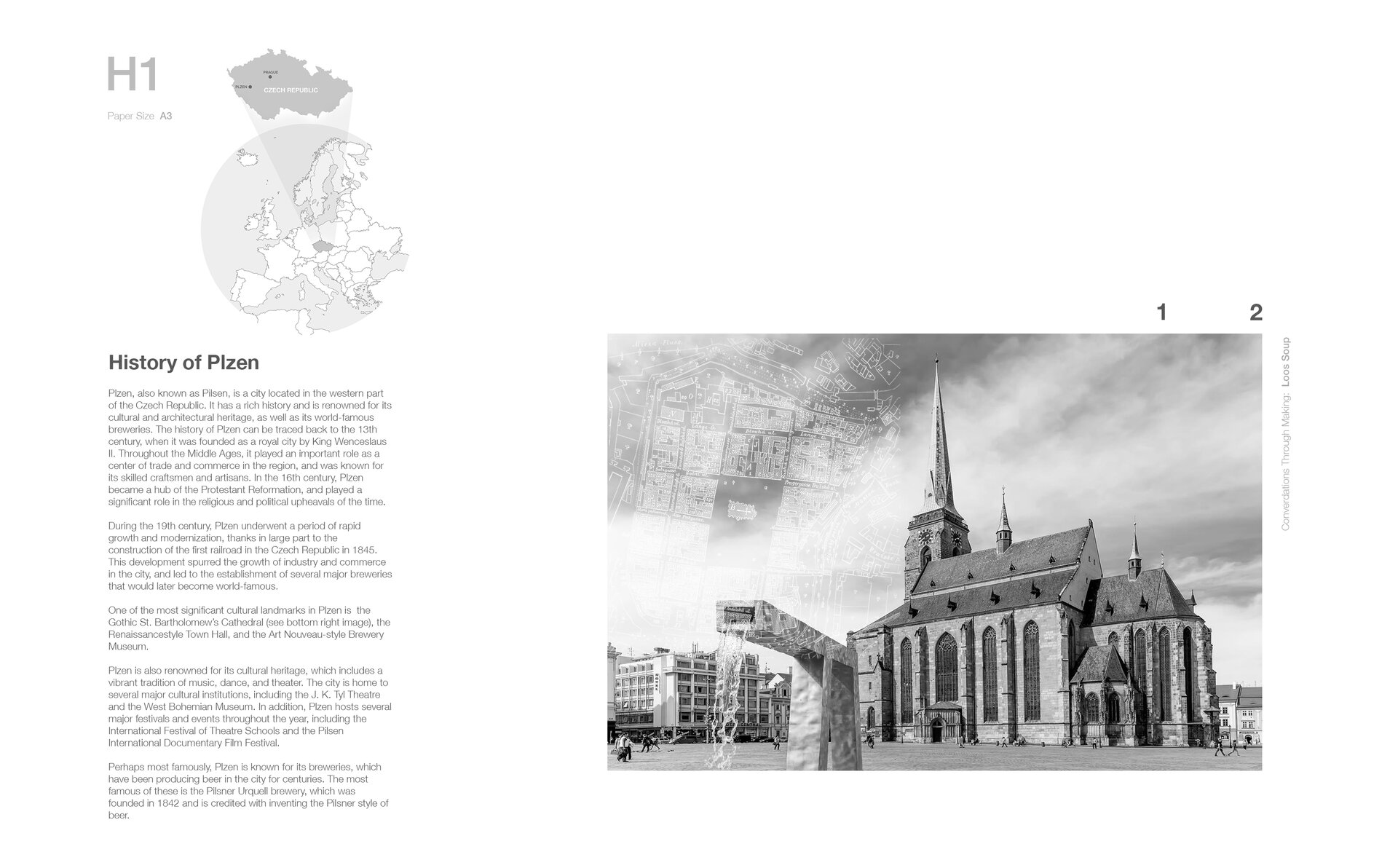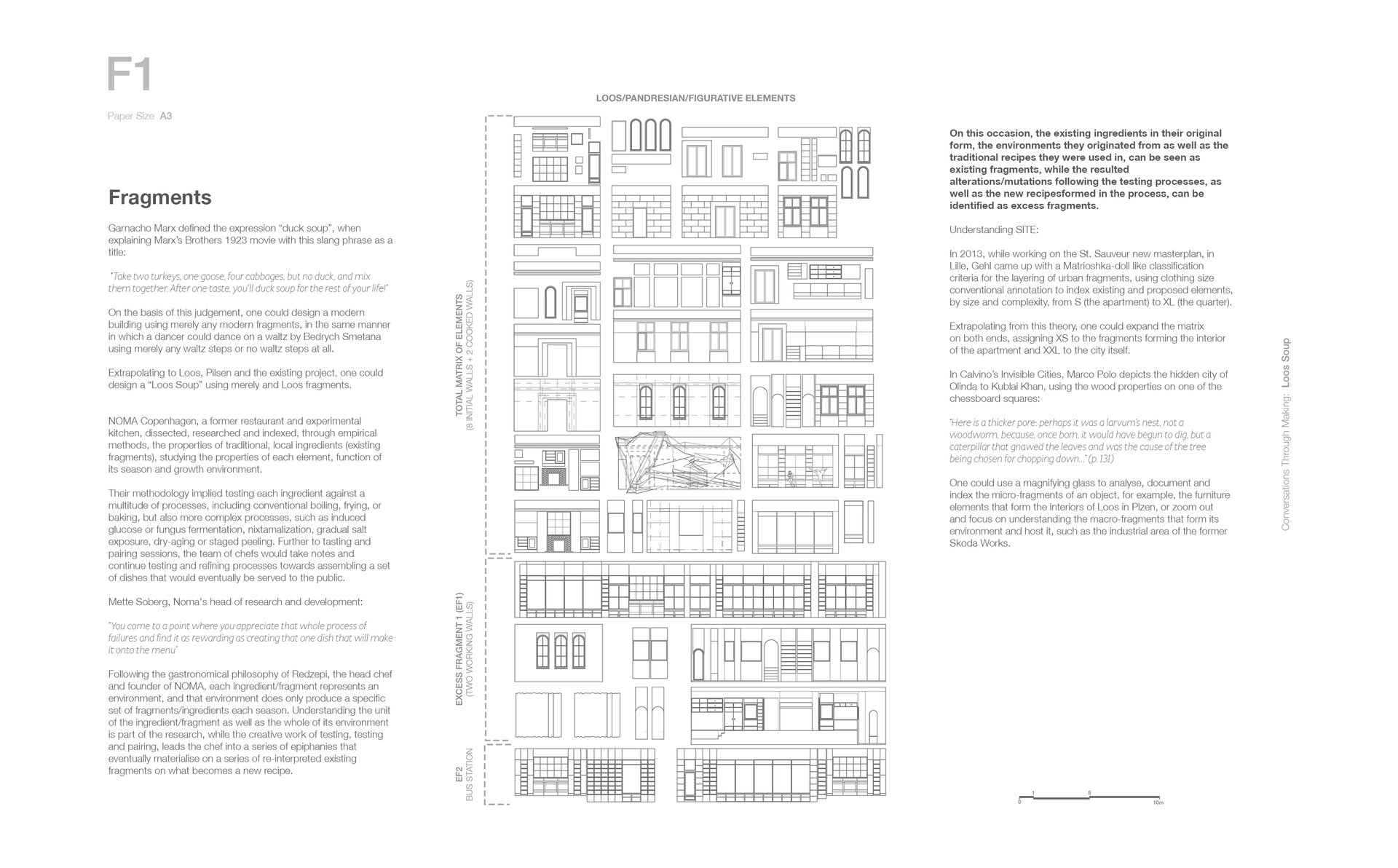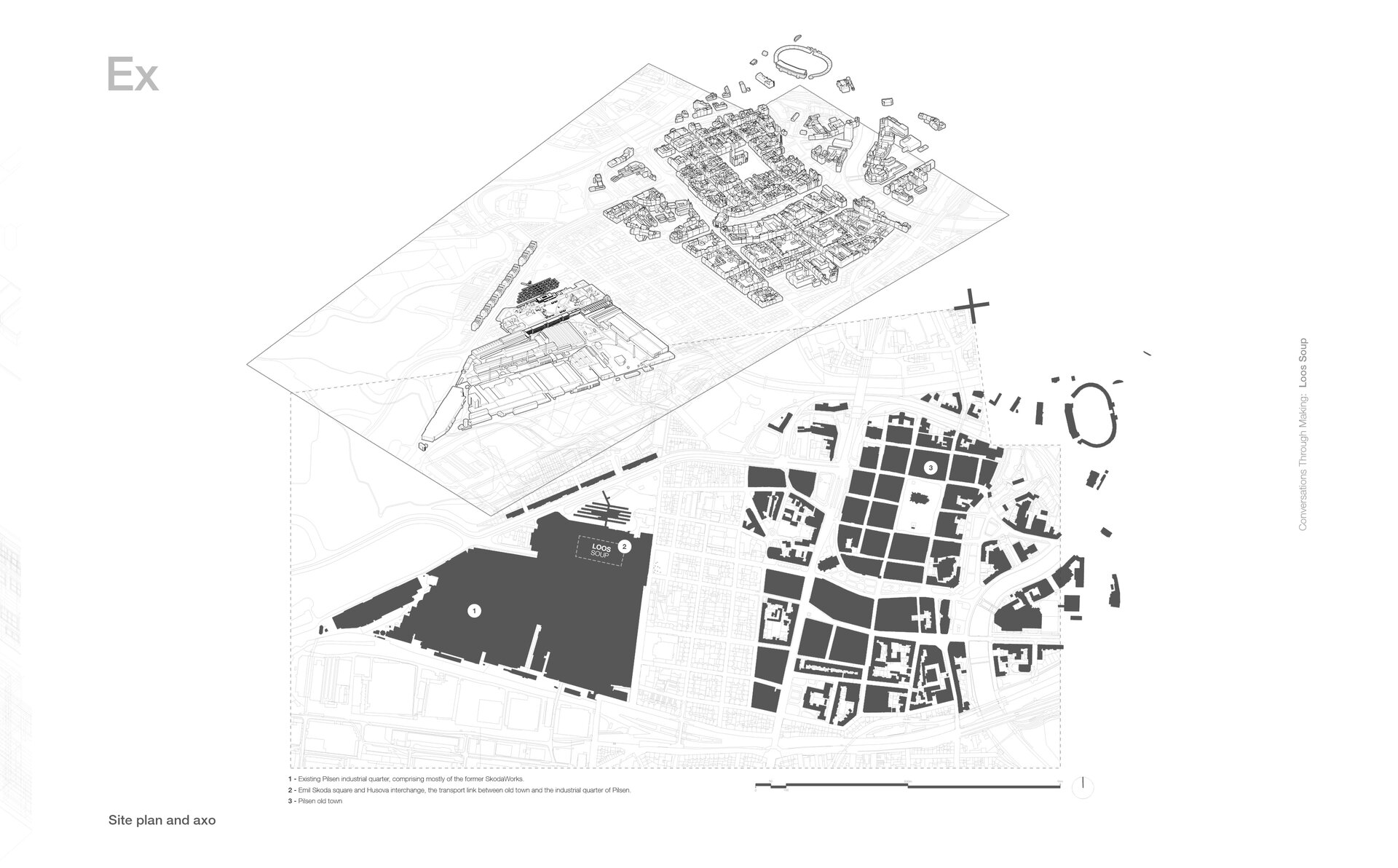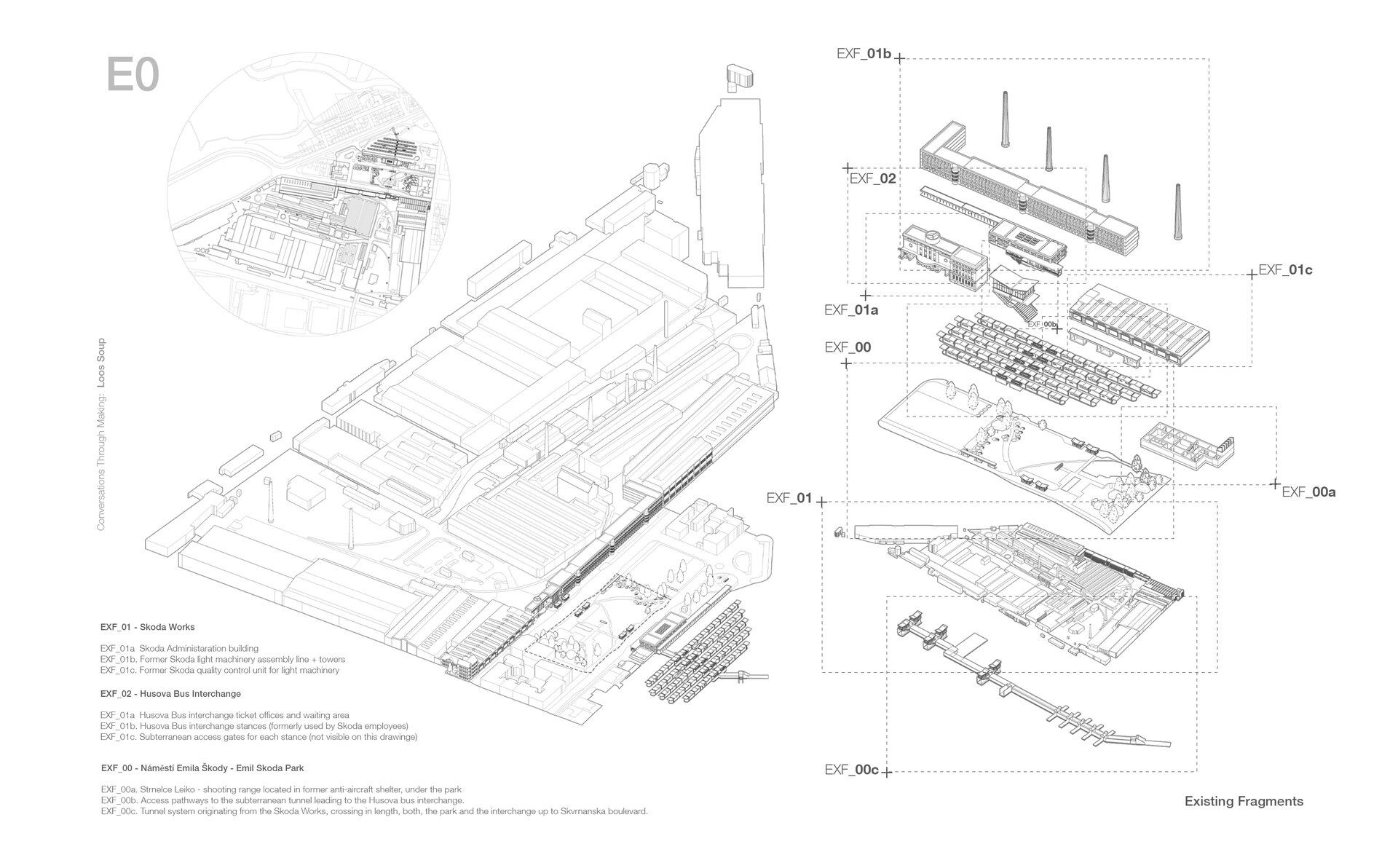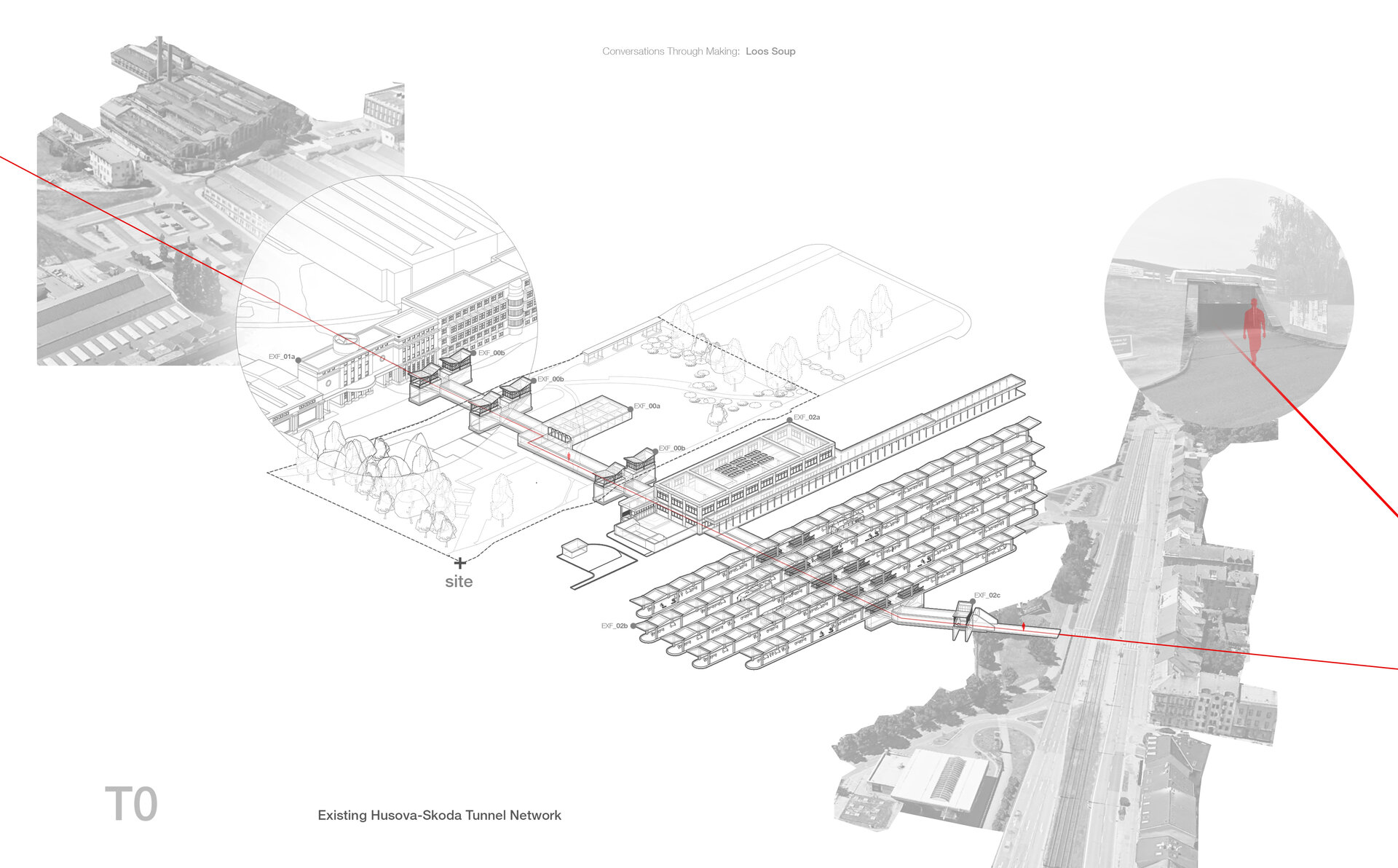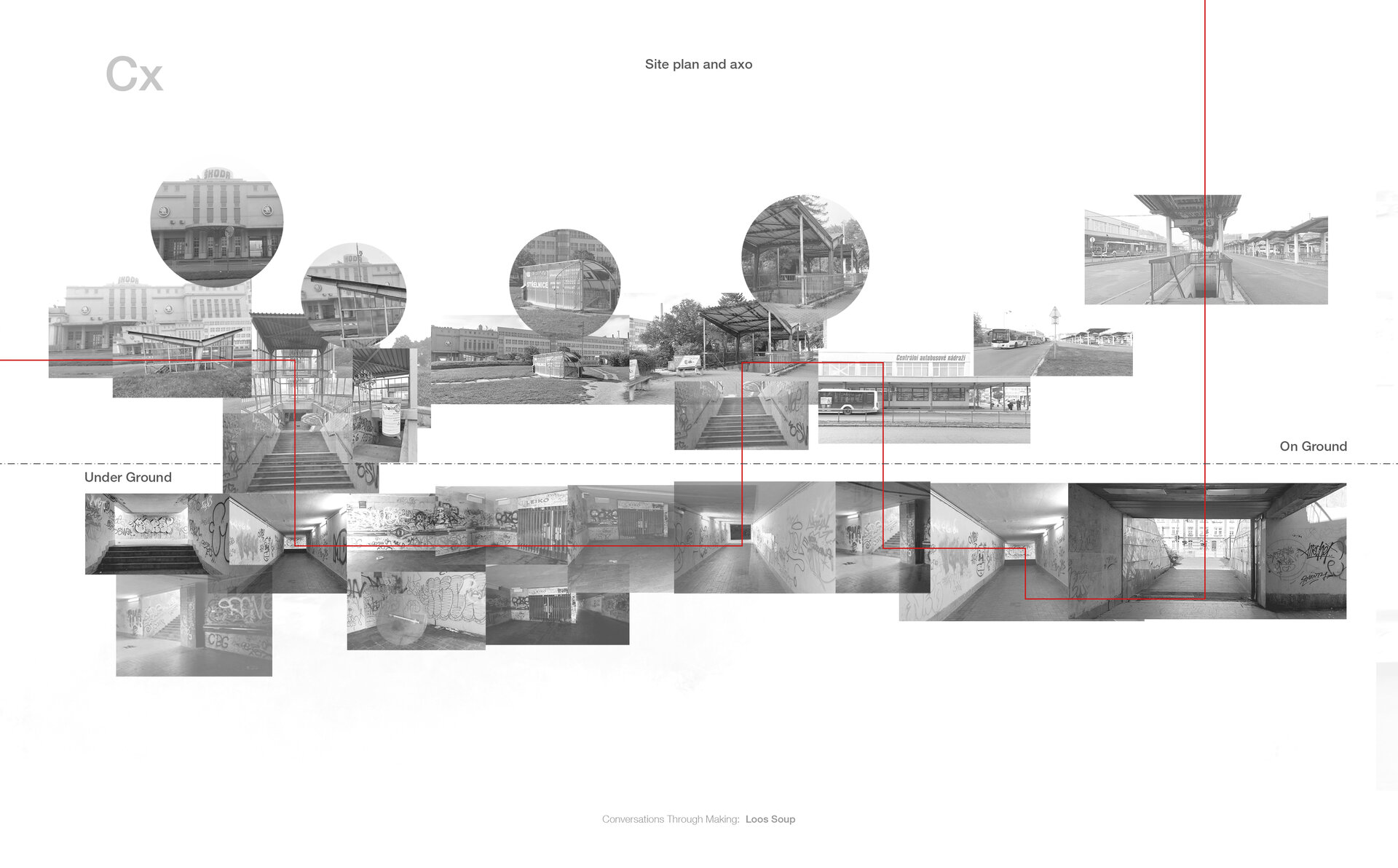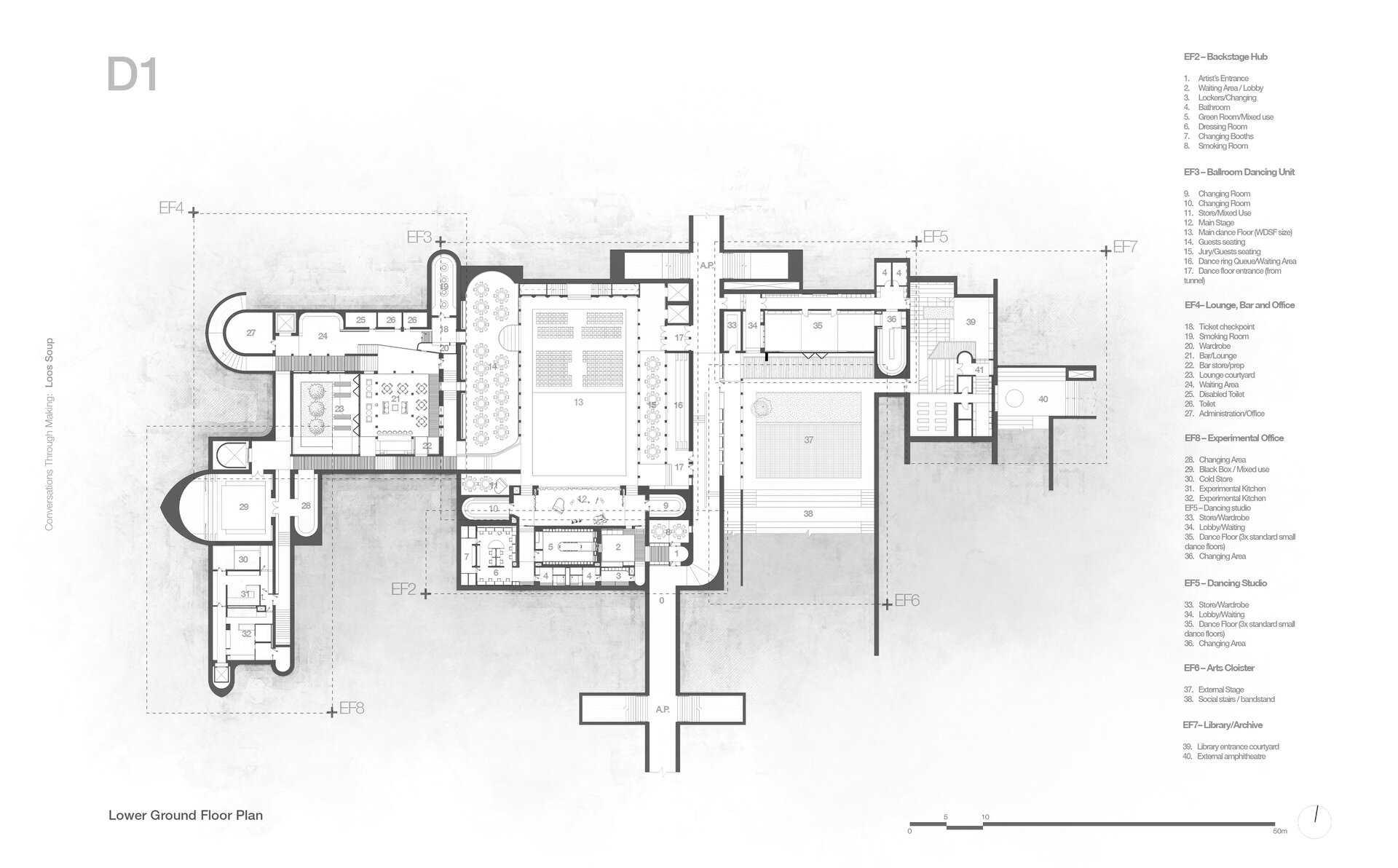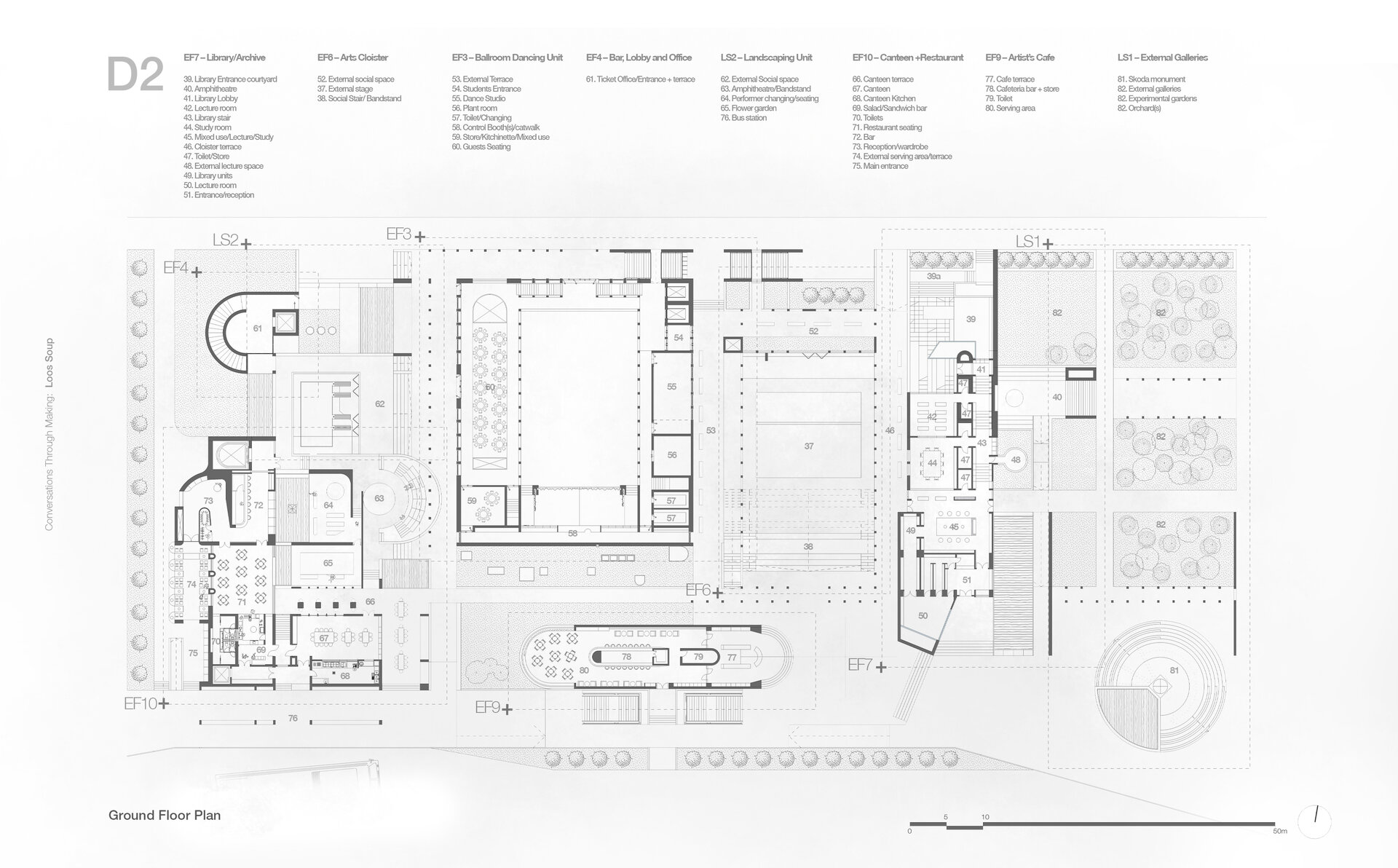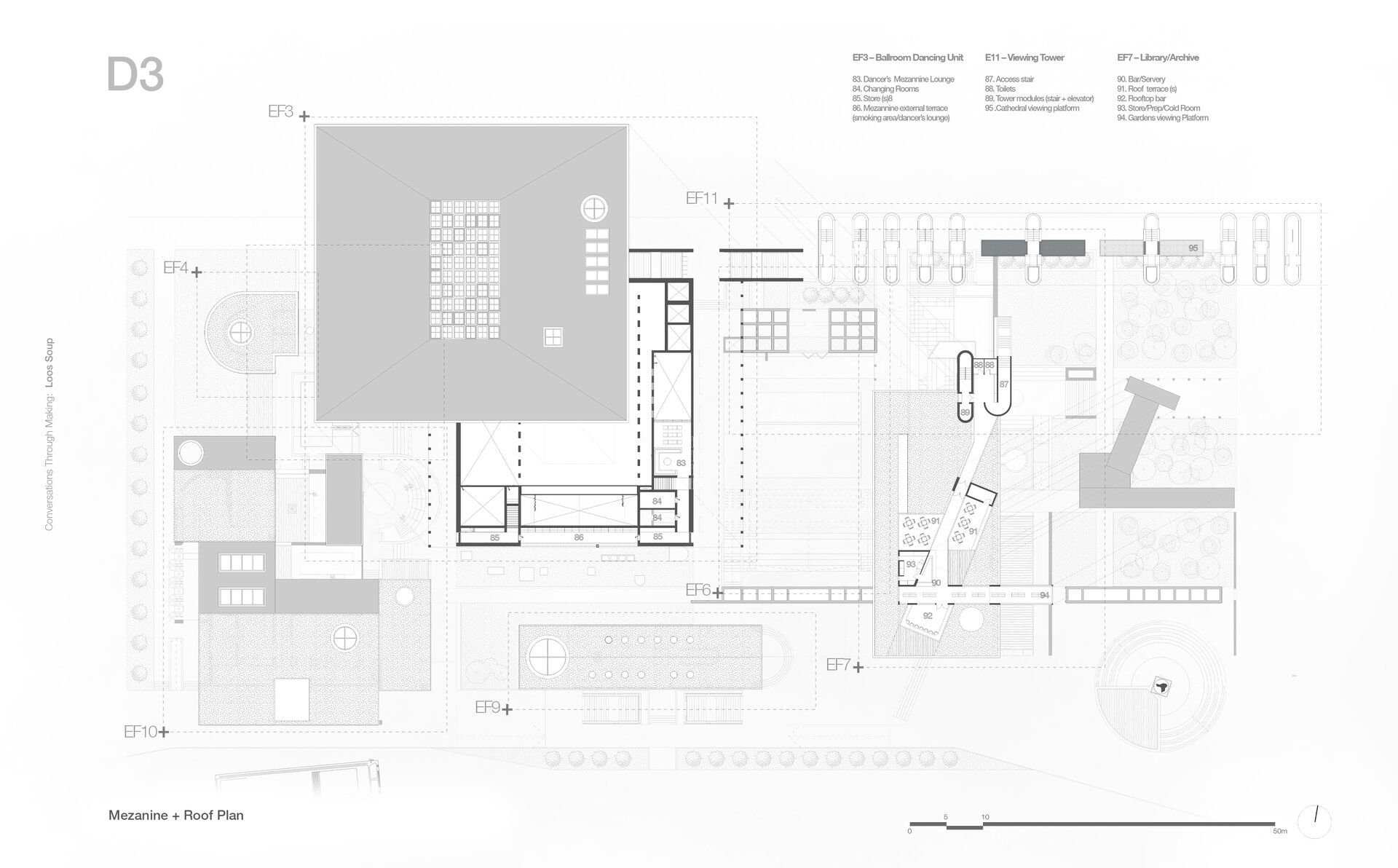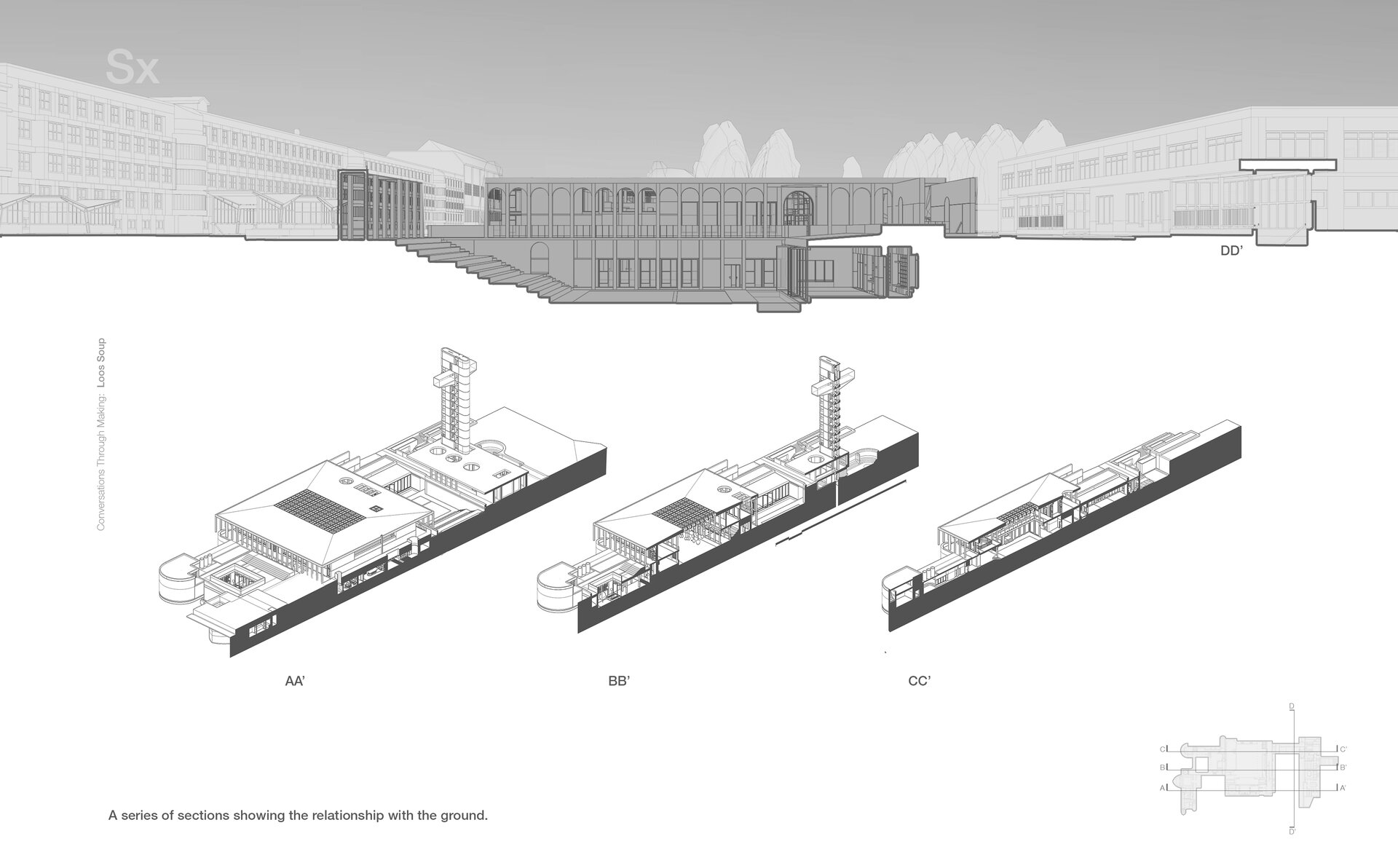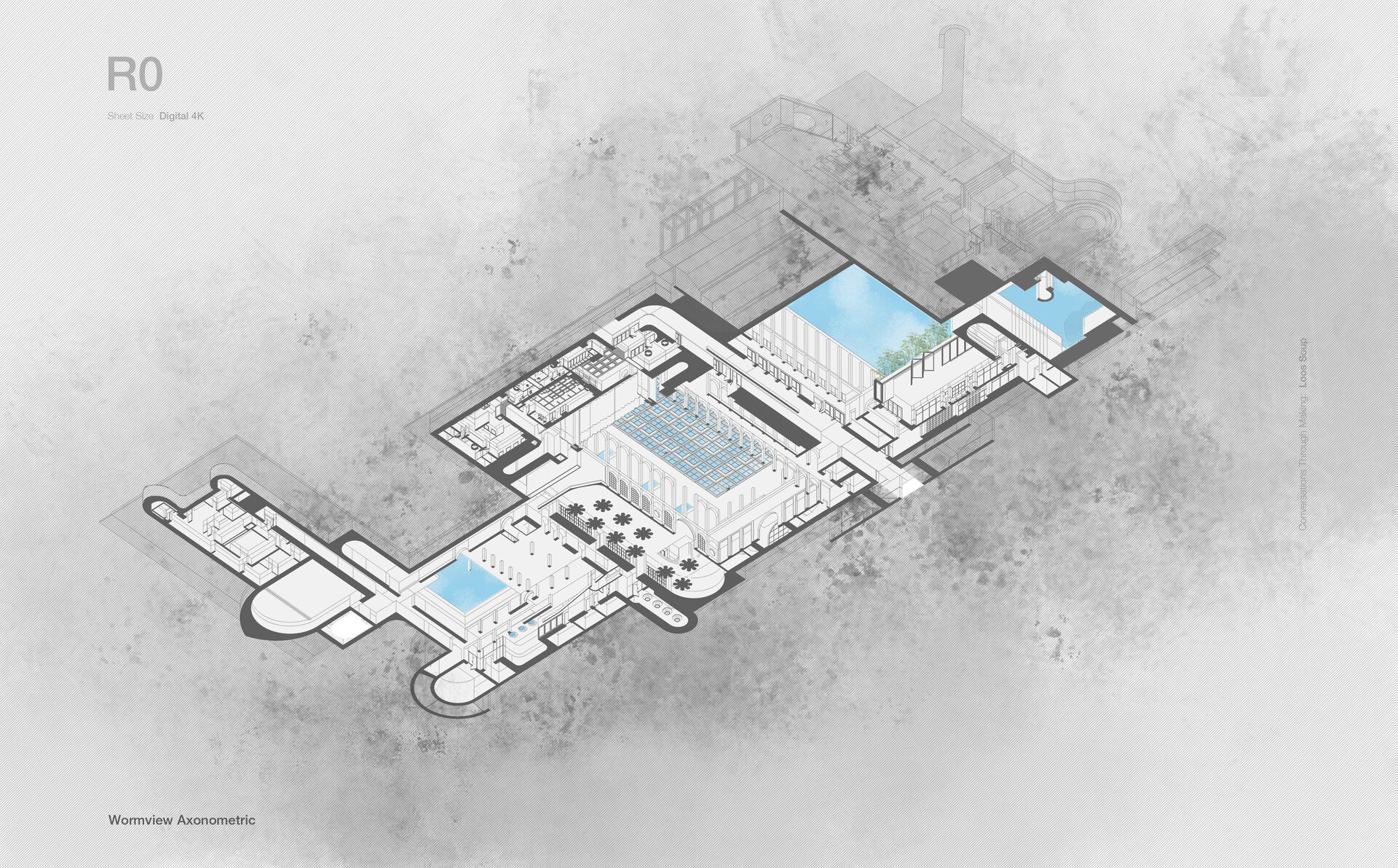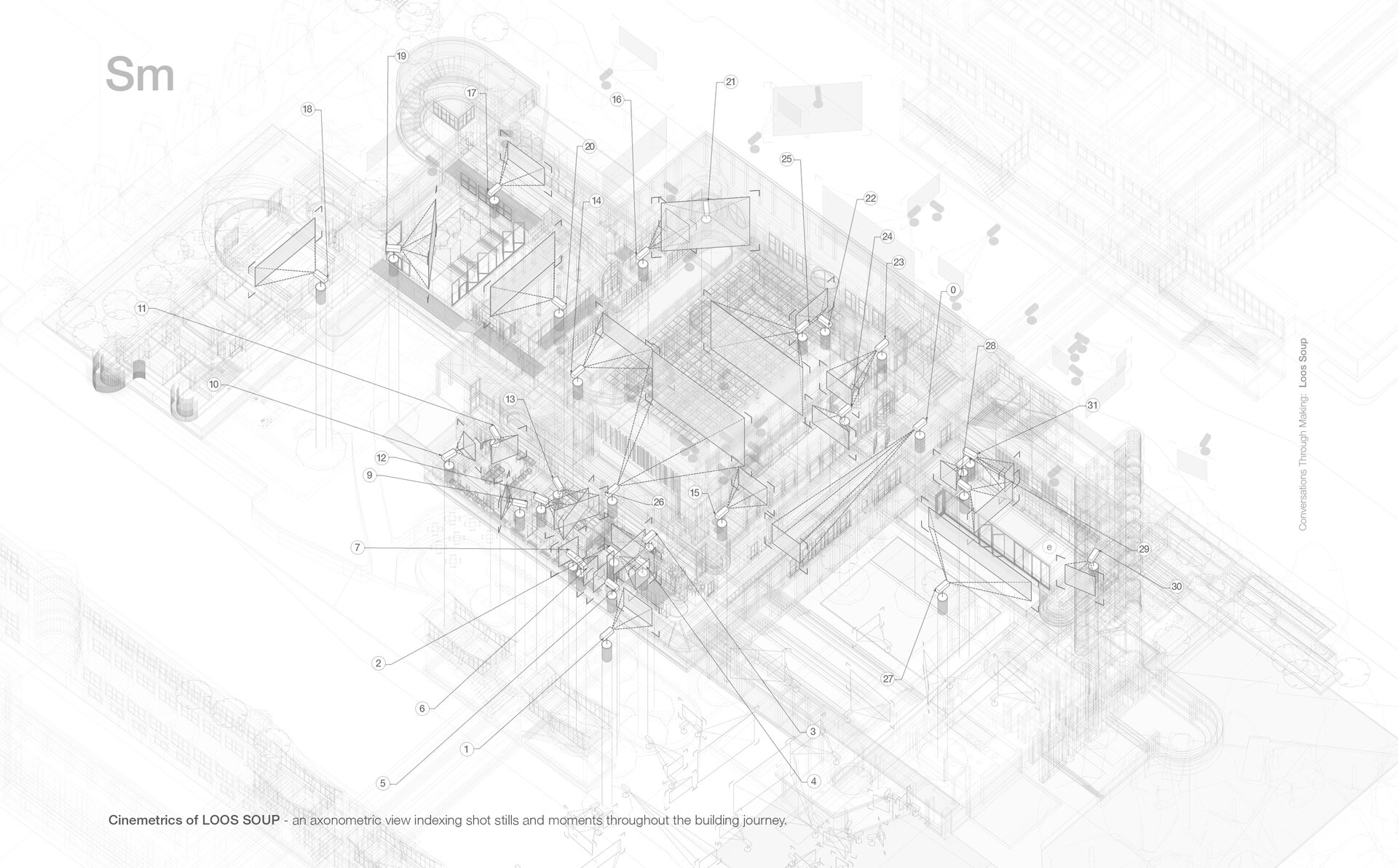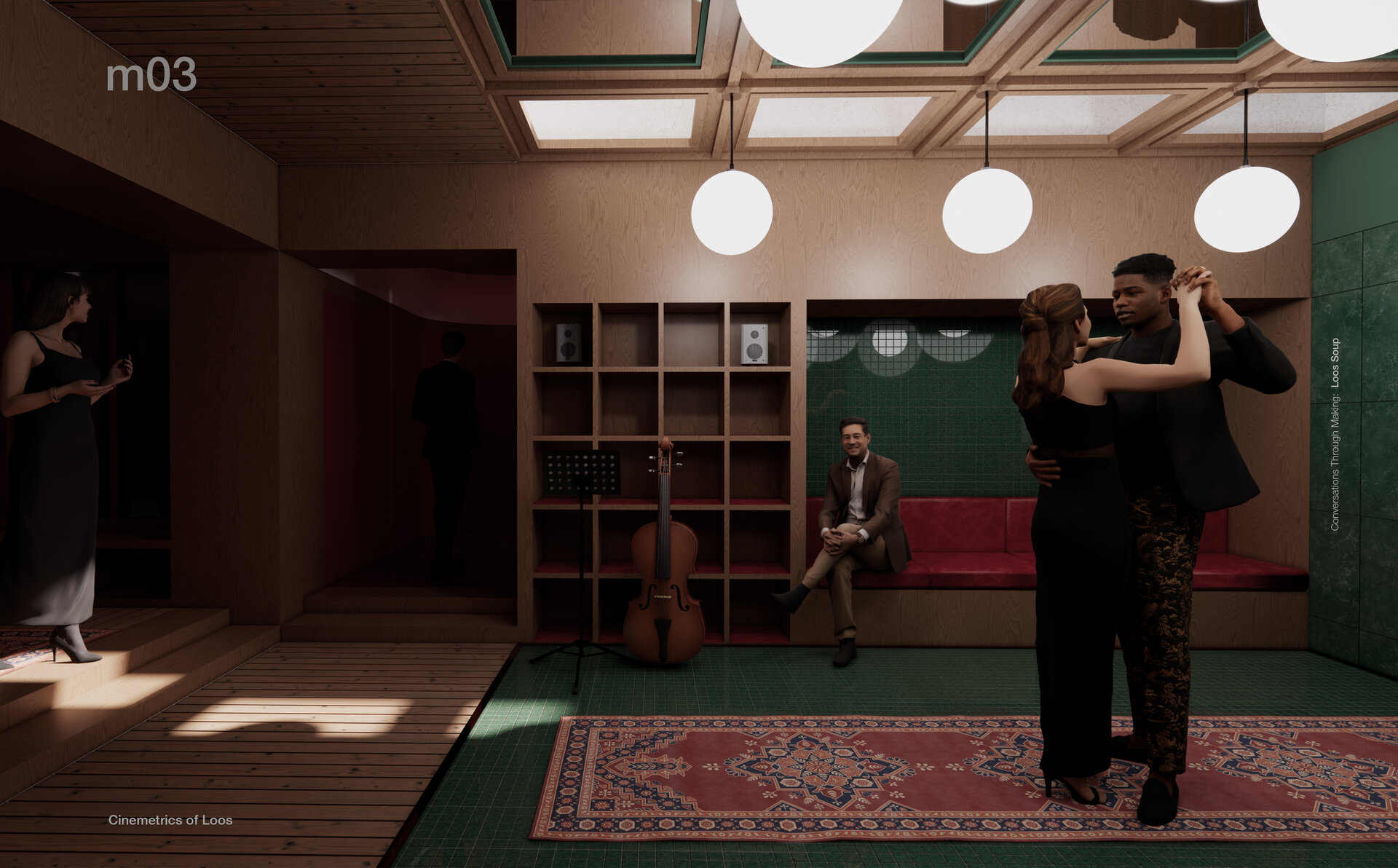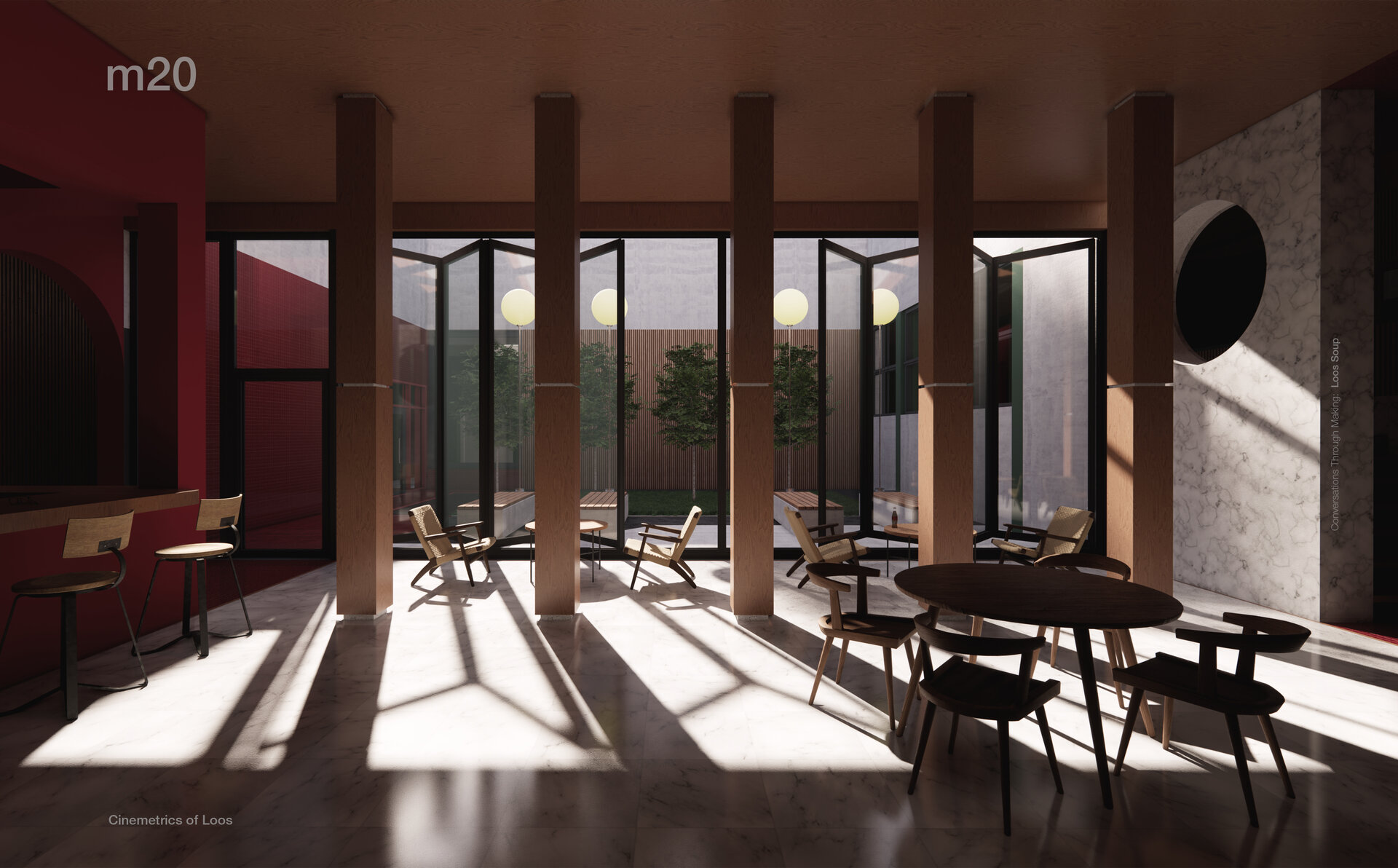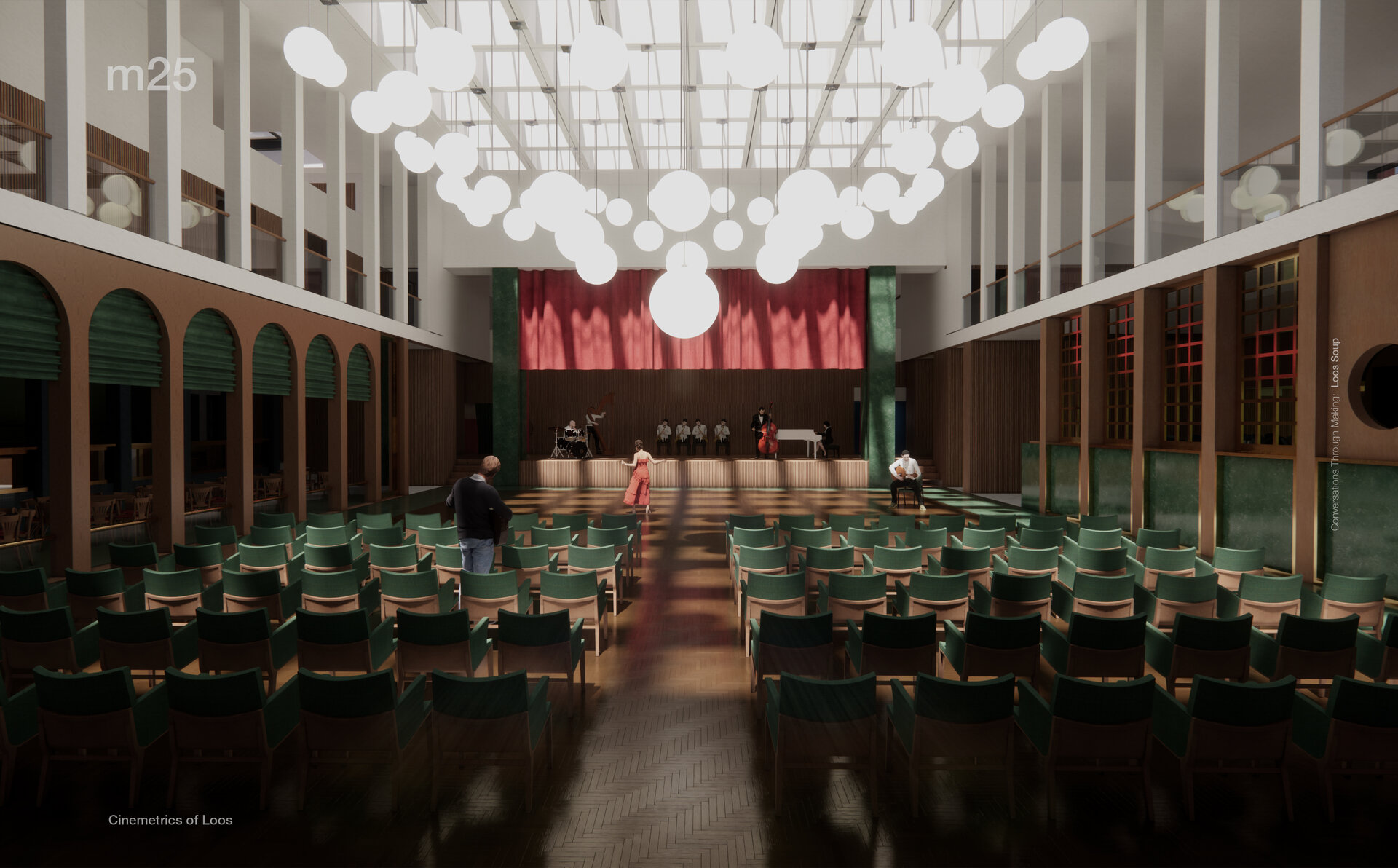
Loos Soup 2.0
Authors’ Comment
A BRIEF INTRODUCTION
“Architecture has always represented the prototype of a work of art the reception of which is consummated by a collectivity in a state of distraction.” (Benjamin, 1936)
Ask three ballroom dancing couples to reproduce the same choreography on a stage, together and you are likely to see the same moves, respecting the same rhythm, style and synchronised with the music, yet, technically, they all execute each step slightly different. One’s hand is up at 82.3 degrees, while other’s is visibly lower.
What if one could break down an act, object or process to its origins, capture its fragments in a matrix and then re-use the resulted assets, applying a personal knowledge matrix as a key towards delivering a recipe that can be recognisable by the public, simultaneously as both, the “familiar” and the “something new”?
In 2015, a team of Australian bio-chemical researchers proved that you can bring a boiled egg to its original composition, reversing the process of cooking.
On the basis of this theory, observing the architecture of Loos in Pilsen, as well as at the heritage of its industrial past, I tried to dissect both, the urban layers of the former industrial site of Skoda Works and Husova, as well as the specifics of his work on the apartment at 12 Klatovska Street into fragments and create a matrix of micro and macro fragments that will later be used in an attempt to create a recipe of what shall represent a “Loos Soup”.
LOOS AND PILSEN
Pilsen is a particularly interesting milestone in Adolf Loos’s career. Starting from 1907, a year prior to the publishing of his essay “Ornament and Crime”, he became acquainted to the city of Pilsen, as he came to visit Vilem and Marta Hirsch, for whom, he has completed his first commission in this region of the former Austro-Hungarian empire.
Unfortunately, in the moment of writing this paragraph, there are only eight apartments that have survived from Loos’s legacy in Pilsen, out of which, four can be visited with an appointment. In the late 1960s, Vera Bahalová, a Czech historian, documented and archived most of Loos’s heritage in Pilsen, making a first step towards preserving these from disappearing, just as the other five that were either demolished or in and irreversible state of disrepair.
FRAGMENTS
Garnacho Marx defined the expression “duck soup”, when explaining Marx’s Brothers 1923 movie with this slang phrase as a title: "Take two turkeys, one goose, four cabbages, but no duck, and mix them together. After one taste, you'll duck soup for the rest of your life!” On the basis of this judgement, one could design a modern building using merely any modern fragments, in the same manner in which a dancer could dance on a waltz by Bedrych Smetana using merely any waltz steps or no waltz steps at all. Extrapolating to Loos, Pilsen and the existing project, one could design a “Loos Soup” using merely and Loos fragments.
- Cultural Ensemble for the quarry-lakes of Jimbolia
- Human crematorium in Timisoara
- Earth research center. Sântana “Cetatea Veche” archeological site
- Ash - between spirit and matter - experimental area of culture
- Alternative Center for Performing Arts in Amsterdam’s Old Harbor
- Thermal Water Complex Baneasa Lake
- Dramatic Arts Centre on Luterana Street
- The Elisabeta Stirbey Institute - Choreography High school in Bucharest
- Center for treatment and relaxation. The revitalisation of Sărata Monteoru spa resort
- Workspaces on Luterană street - Bucharest
- Știrbei Vodă Housing
- Creating places in undesired spaces, Community Center in District 5, Bucharest
- Treatement, recovery and research center for mental disseas
- Revolution Memorial
- Old House - New House: The House of the Architect. Architecture Center in Constanța
- Emphasizing the local specific. Tourist retreat in the Apuseni Mountains
- Olympic Pool at Strandul Tineretului
- Conversion and extension of industrial heritage. Turda brewery factory
- The rehabilitation and extension of the Știrbei Palace in Bucharest. Relocation of the National Museum of Contemporary Art
- The conversion and extension of the Kretzulescu Ensemble from Campulung Muscel
- Center for education, research and exhibition of river navigation. Reconsideration of Valerianos & Lykiardopoulos Mill, Braila
- Hebrew Education and Culture center, Iași
- Interstitial space as an active element in theatre architecture. Extension of the National Theatre Radu Stanca, Sibiu
- Crheator Manufacturing Community Center
- Architecture Centre - Victoriei Avenue
- Loos Soup 2.0
- Intermediary gardens. SCDL (Research and development station for vegetables growing Buzău) modernization and transformation through Z Farming
- Multifunctional complex - Business center. Regeneration of industrial-port areas, Constanța Port, Constanța Area
- Invisible nature - Floreasca Lake. Architecture beyond the visual
- Educational center for music and choreography Calea Moșilor 132
- Faculty of textiles and fashion design. Conversion and expansion of the Lucchesi Factory in Prato
